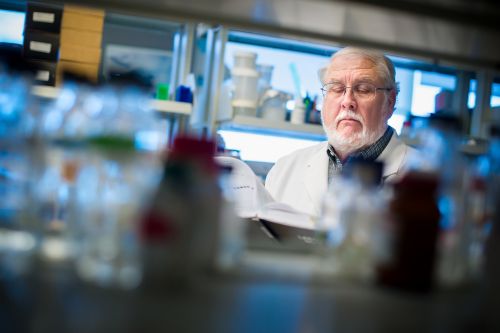St. Jude Family of Websites
Explore our cutting edge research, world-class patient care, career opportunities and more.
St. Jude Children's Research Hospital Home

- Fundraising
St. Jude Family of Websites
Explore our cutting edge research, world-class patient care, career opportunities and more.
St. Jude Children's Research Hospital Home

- Fundraising
New discoveries are simply that and must withstand the test of time

The integrity of the science community gets compromised when new discoveries are over-hyped or worse, proven false.
Scientific findings are provisional and should be treated as such.
– Richard Harris, Rigor Mortis
The test of time.
Because hypotheses can be independently tested, the scientific method is considered a reliable way to understand reality.
Theories that withstand the test of time become useful representations of reality that advance our understanding of nature.
This means new discoveries and new theories are therefore the most likely hypotheses to be incorrect. They usually originate from a single research team and have not been tested extensively.
Don’t believe the hype.
Paradoxically, new discoveries that get the most press coverage and attention are also the discoveries that should be subject to the most skepticism. New discoveries are touted as breakthroughs in media reports, implying that “cures are just around the corner.” This is often not the case.
The reputations of everyone in science are compromised when a scientific study is over-hyped and cures fail to materialize. Even more damaging is when the paper is shown to be false, regardless of whether it is due to poor science or fraud.
It undermines public confidence and future research funding that is necessary for us to continue our work.
Science and the public are both to blame. There is an increasing number of scientists fighting for the same research funding. Promoting new discoveries gets attention and leads to more money, but the pitfalls to that attention hurt the entire science community.
Experiment. Repeat.
This wide-spread problem is being called a “reproducibility crisis” that has led journals and the NIH to tighten the documentation of research. NIH now requires several new sections in grant applications.
One section must evaluate the scientific premise for the proposed research. It critically evaluates the strengths and weaknesses of the published research and preliminary data that the proposed research is based on.
Without this component, your proposed research could be built on a shaky foundation.
There also must be statements about how you will address rigor and reproducibility in your experimental design and data analysis.
Reviewers are now tasked with evaluating scientific rigor in an application to ensure the strict application of the scientific method and unbiased experimental design, methodology, analysis, interpretation and reporting of results.
Check your work.
Many misleading conclusions arise from poorly designed experiments and inappropriate analyses.
Critically evaluate new discoveries and if you plan to follow them up, the first task should be to perform experiments in your laboratory that validate the underlying scientific premise.
Be skeptical. Be thoughtful. Understand that good science takes time, and part of being a scientist is being patient.
Jiangwei Yao, PhD, contributed to this post.






